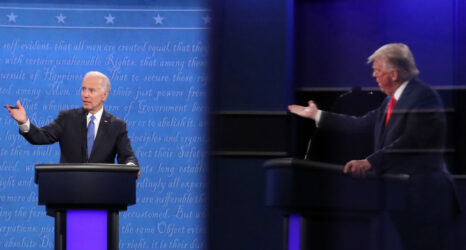Politico ran a story this week on the most startling thing about the press corps covering Hillary Clinton’s campaign: most of the journalists on the trail are women. That’s unusual, and awesome, in a world where the news is reported overwhelmingly by men.
But there was one thing we couldn’t help but notice about the “class photo” of the women covering Clinton—a distinct lack of diversity.
While we wouldn’t presume the ethnicities of the women pictured, it’s clear that few are of color—a reflection of the situation in newsrooms more broadly. In 2010, more than one-third of students enrolled in journalism and mass communications programs were minorities, which reflects the population of nonwhites in the general U.S. population. But look at the racial makeup of the mainstream media workforce and that diversity simply isn’t represented.
According to the most recent report from the American Society of News Editors, which conducts a voluntary yearly census of newsrooms, journalists of color accounted for just 12.76 percent of those employed, with women and men sharing those positions roughly 50/50.
“The fact that our industry isn’t making progress continues to be frustrating,” said Karen Magnuson, editor of the Rochester Democrat and Chronicle and co-chair of the ASNE Diversifying the News Committee, in a statement. “As the makeup of our nation changes, our news reports must change, as well. Our newsrooms and coverage must be inclusive to tell the real story of what is really happening in our communities. How can we do that well if our newsrooms lack diverse voices and perspectives? We editors can and should do better.”
Who covers the news matters. As Margaret Sullivan, public editor at The New York Times, wrote recently,
My experience leading a newsroom showed me, time and time again, that staff diversity results in better and different coverage. (I was proud to appoint women of color as executive sports editor and editorial board member, two firsts.) Not in some kind of silly or obvious straight-line way, as in “women write about things that interest women readers.” It’s more this: When the group is truly diverse, the nefarious groupthink that makes a publication predictable and, at times, unintentionally biased, is much more likely to be diminished. And that’s a good thing.
So while we’re glad to see more women on the campaign trail—the press corps has historically been a lamentable boys’ club—it’s high time for newsrooms to reflect the populations they serve, and employ all of those freshly graduated minority journalists.





